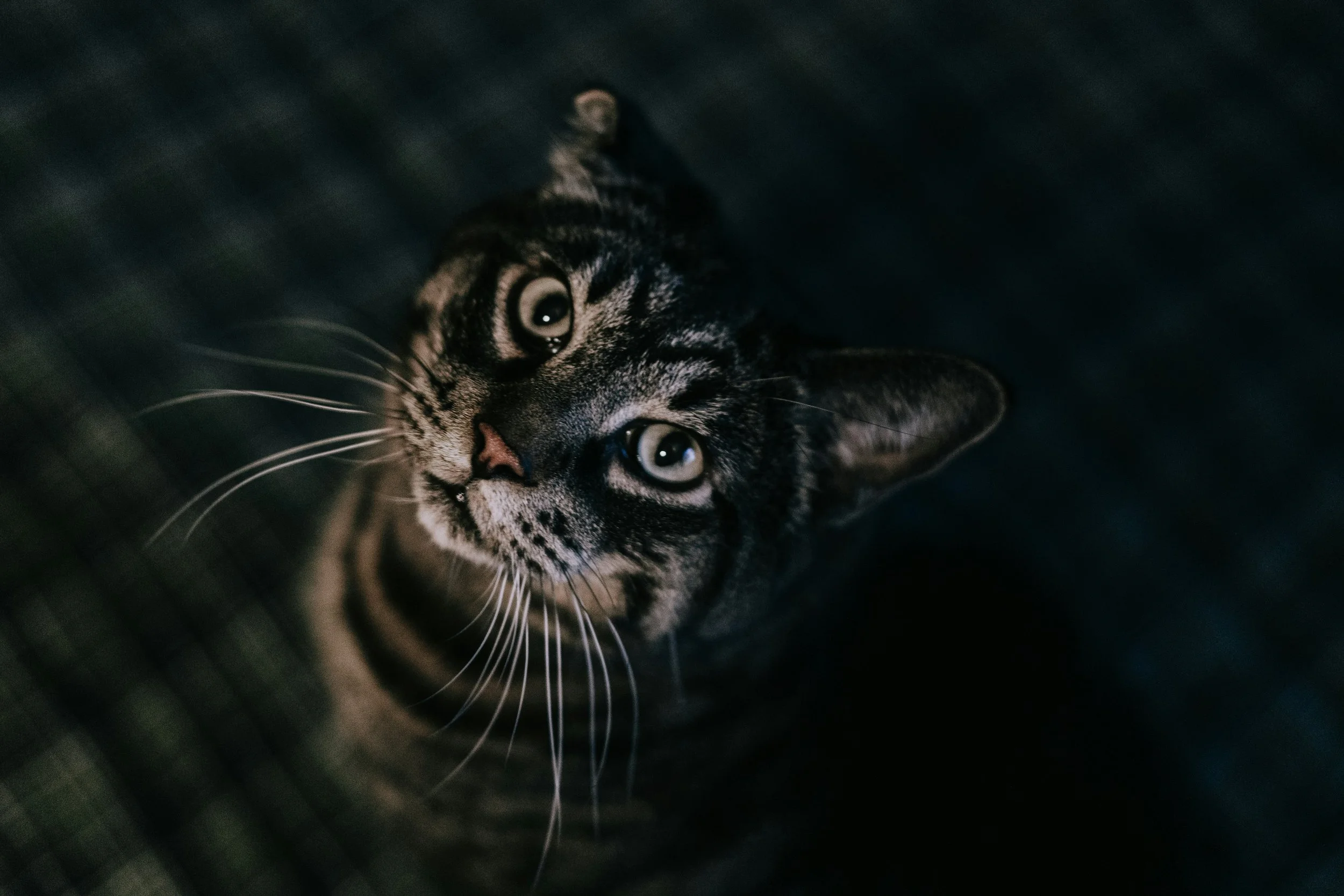You lookin’ at me? What is the animal gaze?
Priscilla Du Preez, Unsplash.
When animals look back:
There is something quietly unsettling about being watched by an animal. A dog stares into your eyes, a deer freezes mid-step to meet your gaze, a cat regards you with quiet judgment. What happens in that moment when an animal looks back at us? What do we see, or rather, what does their gaze do to how we see ourselves?
Derrida and the ethical shock of animals looking back:
The philosopher Jacques Derrida famously asked this question in his lecture The Animal That Therefore I Am (2002), where he recounts a moment of standing naked before his cat. This encounter strips away the illusion that only humans possess subjectivity. ‘It is as if I were ashamed,’ he writes, ‘naked, in front of this cat.’ Derrida's point is not simply that the cat sees, but that its gaze returns a kind of ethical charge. The animal gaze unsettles the anthropocentric world, forcing us to recognise the animal not as a mute object or symbol, but as a being with agency, perception, and presence.
Children’s books and the blurring of human/animal boundaries:
In children's literature, this moment of recognition, the collapse of the boundary between child and animal, human and nonhuman, is often a central theme. Picture books and novels frequently present animals not only as companions or characters but as subjects capable of deep emotional and ethical relationships with humans. One key example is Charlotte's Web by E. B. White, where the titular spider’s gaze and intelligence invert the expected human-animal hierarchy. Wilbur, the pig, is not merely saved by Charlotte’s cleverness; he is transformed through her recognition of his value. Her gaze, and her words, grant him a kind of moral existence.
Maurice Sendak’s Where the Wild Things Are also flirts with this idea. The wild things are not simply projections of Max’s emotions, but they respond to him, desire connection, and in turn, are left behind. The ambiguity of their gaze - loving, monstrous, and melancholic, reveals something deeper: animals and creatures in children's literature often serve as mirrors and moral foils. But increasingly, they are also treated as kin.
Re-thinking human-animal relationships:
The idea of animals as kin rather than ‘other’ marks a philosophical and cultural shift. Where once animals were positioned as the opposite of the human-instinctual rather than rational, wild rather than cultured, there is now a growing recognition of interconnectedness. Donna Haraway, building on Derrida and others, argues for a notion of companion species, creatures who co-shape human lives and identities. This is not just about sentimentality or conservation but about acknowledging a shared world where the boundaries between species are porous and contingent.
Ted Hughes: the animal as wild kin:
Ted Hughes, poet, and mythmaker, is a powerful voice in this terrain. In works such as The Thought-Fox and Crow, animals are not symbolic stand-ins for human concerns but agents of their own mystery and power. In The Thought-Fox, the animal’s movement is also the movement of the poetic imagination, but the fox is not reduced to metaphor. It retains its own wild integrity:
‘With a sudden sharp hot stink of fox
It enters the dark hole of the head.’
The fox is a kind of kin, yet it is not domesticated by the poem. Instead, Hughes holds open the tension between the animal as unknowable and the animal as kin. In Crow, his bleak myth cycle, the central figure is a creature who moves between species and between life and death, ultimately unsettling the human world. Hughes’s animals often resist the sentimentalism of children’s stories, yet they offer something crucial: a challenge to human dominion, and a call to humility.
The animals voice in modern children’s literature:
Children’s literature has evolved too. Books like The One and Only Ivan by Katherine Applegate present animals not merely as voices but as moral subjects. Ivan, a gorilla held in captivity, narrates his own story, his gaze returned through language. The reader is invited to see the world through Ivan’s eyes, and in doing so, recognise the injustice of his containment. Here, the animal gaze is not merely philosophical, it is political.
The gaze that transforms us:
What Derrida, Hughes, and contemporary children’s books all suggest is that the moment of being looked at by an animal is transformative. It breaks the fantasy that humans are alone in consciousness or in suffering. The gaze of the animal invites us, perhaps demands us, to reframe our relationships, not just ethically but existentially. When the animal looks back, we are no longer the unquestioned subject. We become one gaze among many. In that moment, something opens, not just shame or empathy, but kinship.
To move from ‘otherness’ to kinship is not to erase difference. The animal is still not the human, nor should it be. But to become kin is to acknowledge that we share more than we imagined: breath, mortality, vulnerability, and maybe even wonder. In a time of ecological collapse and mass extinction, learning to be looked at by the animal and to answer that gaze, is not just a literary exercise. It is a moral imperative.
